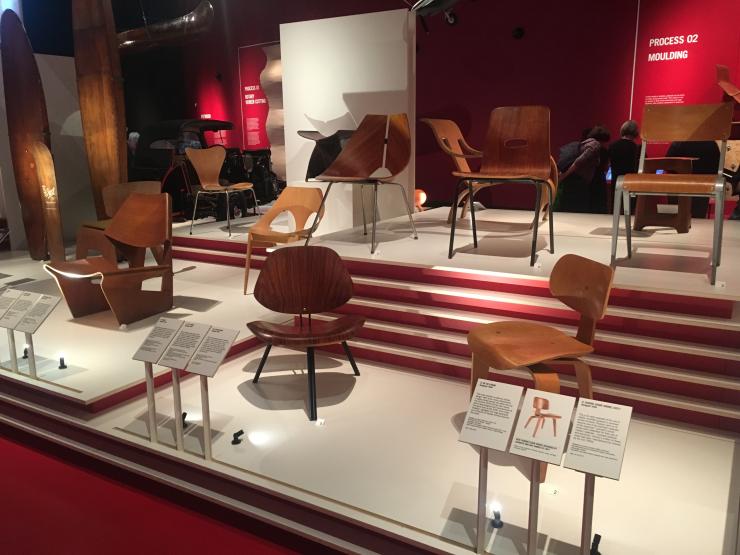'Plywood Material of the Modern World'
This recent exhibition at the Victoria & Albert museum was a true gem and I urge you to see it if you have a spare moment before 12 November. ‘But why would I be interested in Plywood?’, do I hear you cry. Because it showcases an unsung material hero that has helped to shape the modern world.
Manufactured at an industrial scale since the 1870s, Plywood has paved the way not only for stunning furniture design, but as you’ll see from the exhibition this material was used everywhere. From architecture to planes, trains (yes, trains) and automobiles through to tea chests, suitcases and even wooden swimming costumes ‘to keep girls afloat’.
Ground-breaking in the early 1800s, plywood could be mass produced because new machines were able to cut veneers cost-effectively. And, today, it’s produced basically the same as it was – it’s just the technology of today has cut time even more.
Rather than going into the details of production in this blog, I really wanted to pick up on the couple of items being exhibited.
The elevated plywood railway – due to the material’s strength and weight it was used as a cheaper alternative to cast iron. The notes from the exhibition tell us “in 1867 a 107-foot long prototype railway, made entirely as a plywood moulded tube, was exhibited in New York. Propelled by large fans, 75,000 people rode the railway.”
Then there was the furniture. A chair by Alvar Aalto, made from as a single piece of plywood. The stool by Jack Pritchard or the chair by Grete Jalk really showcase the beauty of the material.
Then there were the surfboards and the skateboards. What was fascinating about the large board - the ‘Toothpick’ - was that it was actually brought to the UK by a serviceman after the second world war. Believe you me, it had to be at least 7ft.
However, as a natural material, sustainability and the environment is a big issue. Its use is unfortunately a major contributor to deforestation and illegal logging. The exhibition highlighted this with a clearly laid out infographic, illustrating the massive issue of the trade.
So, where does that leave us with construction? Architects are looking at a more sustainable alternative. New products that can be manipulated in the same way have therefore seen a rise in use as an alternative material in contemporary design. Also large-scale engineered wood has come to the fore and been used by architects as a way of sustainable construction. Turning unproductive coconut trees into wood products by being rotary cut is one way. CLT (cross-laminated timber) is also providing a sustainable method of construction.

